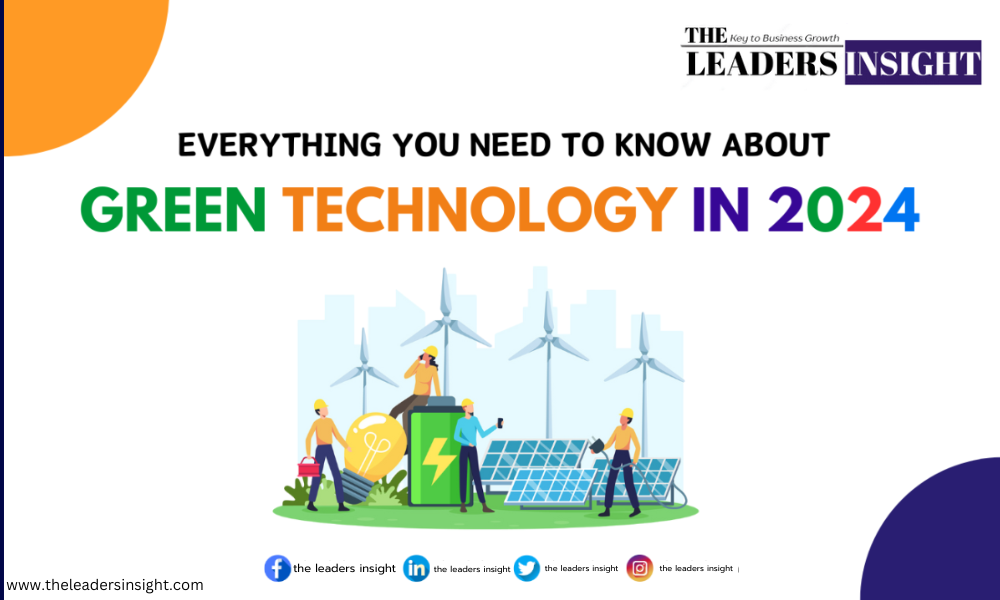Emerging Trends in Green Technology: October 2024

As we enter October 2024, the urgency to combat climate change and promote sustainable practices is greater than ever. Green technology, or green tech, plays a crucial role in this mission, enabling businesses and consumers to minimize their environmental impact while fostering sustainability. This article explores the most significant trends in green technology shaping our future, highlighting innovations, market shifts, and actionable insights.
1. Renewable Energy Innovations
The renewable energy sector is undergoing rapid advancements, making clean energy sources more efficient and accessible. In October 2024, innovations in solar, wind, and hydroelectric power are gaining traction.
Key Developments:
- Solar Panel Efficiency: New materials like perovskite are enhancing solar panel efficiency, allowing for more energy capture from sunlight.
- Offshore Wind Farms: Offshore wind technology is expanding, with larger turbines and better energy storage solutions, making it a viable option for coastal regions.
Why It Matters: According to the International Energy Agency (IEA), renewables are expected to account for over 90% of the increase in global power capacity through 2025. Embracing these innovations is crucial for businesses and governments aiming to transition to cleaner energy sources. For further insights, check the IEA Renewable Energy report.
2. Energy Storage Solutions
As renewable energy sources become more prevalent, effective energy storage solutions are essential for ensuring a stable energy supply. In October 2024, advancements in battery technology are transforming how energy is stored and utilized.
Emerging Technologies:
- Solid-State Batteries: These batteries offer higher energy density and increased safety compared to traditional lithium-ion batteries, making them ideal for electric vehicles (EVs) and grid storage.
- Flow Batteries: Suitable for large-scale energy storage, flow batteries are gaining traction due to their ability to store energy for extended periods.
Actionable Insight: Businesses in the energy sector should explore partnerships with companies specializing in battery technology to enhance their energy storage capabilities. Learn more about energy storage at the Energy Storage Association.
3. Sustainable Transportation
The push for sustainable transportation solutions is accelerating as governments and consumers seek to reduce their carbon footprints. In October 2024, the adoption of electric vehicles (EVs) and alternative transportation methods is on the rise.
Key Trends:
- EV Adoption: With advancements in charging infrastructure and government incentives, the adoption of electric vehicles is expected to surge, with projections indicating that EVs will represent 30% of new car sales by 2025.
- Public Transportation Innovations: Cities are investing in electric buses and trains, making public transportation a more sustainable option for commuters.
Why It Matters: Transitioning to electric vehicles can significantly reduce greenhouse gas emissions. Businesses should consider integrating sustainable transportation solutions into their logistics and employee commuting options. For more information, visit the International Council on Clean Transportation.
4. Circular Economy Practices
The circular economy model focuses on minimizing waste and maximizing resource efficiency. In October 2024, businesses are increasingly adopting circular economy principles to reduce their environmental impact.
Circular Economy Strategies:
- Product Life Cycle Management: Companies are designing products for longevity, repairability, and recyclability, reducing waste and conserving resources.
- Material Recovery: Advanced recycling technologies enable the recovery of valuable materials from waste, promoting resource circularity.
Why It Matters: Transitioning to a circular economy could generate significant economic benefits. Businesses should explore opportunities to incorporate circular economy practices into their operations. For further insights, check out the Ellen MacArthur Foundation.
5. Green Building Technologies
Green building technologies are transforming the construction industry, focusing on sustainability and energy efficiency. In October 2024, the trend toward eco-friendly buildings continues to gain momentum.
Key Innovations:
- Energy-Efficient Designs: New architectural designs prioritize energy efficiency, utilizing natural light and ventilation to reduce energy consumption.
- Sustainable Materials: The use of sustainable materials, such as reclaimed wood and recycled steel, is becoming standard practice in construction.
Why It Matters: Buildings contribute significantly to global energy consumption. Adopting green building practices can reduce energy usage and operational costs. For more information on green building, visit the U.S. Green Building Council.
6. Water Conservation Technologies
Water scarcity is a pressing global issue, and green tech is playing a vital role in promoting water conservation. In October 2024, innovative technologies are emerging to help manage water resources more efficiently.
Innovative Solutions:
- Smart Irrigation Systems: These systems use sensors and weather data to optimize irrigation, reducing water waste in agriculture.
- Water Recycling Technologies: Technologies that recycle wastewater for non-potable uses are gaining popularity in both residential and commercial settings.
Why It Matters: As water scarcity becomes increasingly severe, implementing water conservation technologies is essential for businesses and communities alike. Learn more about water conservation strategies from the World Resources Institute.
7. Green Tech Startups
The rise of green tech startups is revolutionizing the industry, bringing fresh ideas and solutions to the market. In October 2024, these startups are addressing various environmental challenges, from energy efficiency to waste management.
Emerging Startups to Watch:
- Carbon Capture Technology: Startups focused on carbon capture are developing innovative solutions to capture and store CO2 emissions from industrial processes.
- Sustainable Agriculture: Companies are creating technologies to promote sustainable farming practices, reducing the environmental impact of agriculture.
Why It Matters: Supporting green tech startups can lead to innovative solutions and economic growth. Investors and businesses should look for collaboration opportunities to foster sustainable development. For more information, check out Greentech Media.
As we navigate October 2024, the green technology landscape is rapidly evolving, driven by innovation and the pressing need for sustainability. By embracing trends such as renewable energy innovations, energy storage solutions, sustainable transportation, circular economy practices, green building technologies, water conservation, and the rise of green tech startups, businesses can play a crucial role in creating a more sustainable future.
Staying informed about these trends and implementing relevant strategies will be vital for those looking to thrive in the green tech sector. With a commitment to sustainability, your organization can contribute to a healthier planet while achieving economic success.
